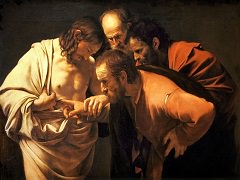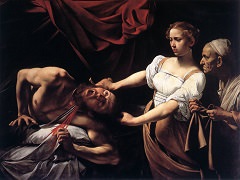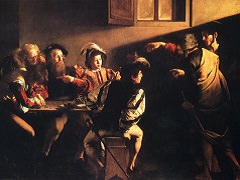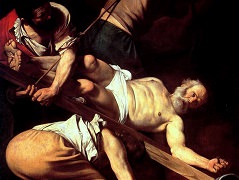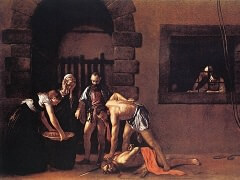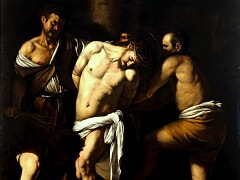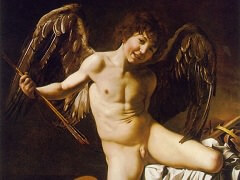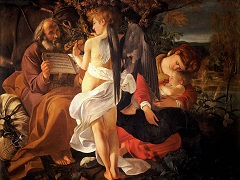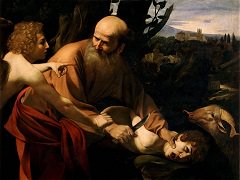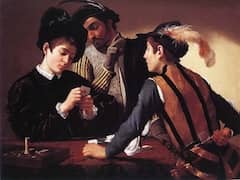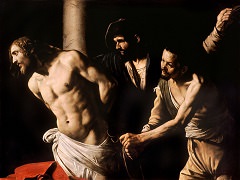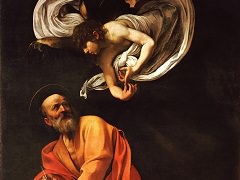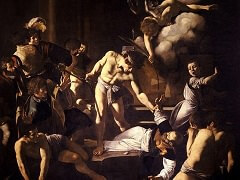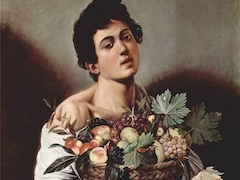The Lute Player, 1596 - by Caravaggio
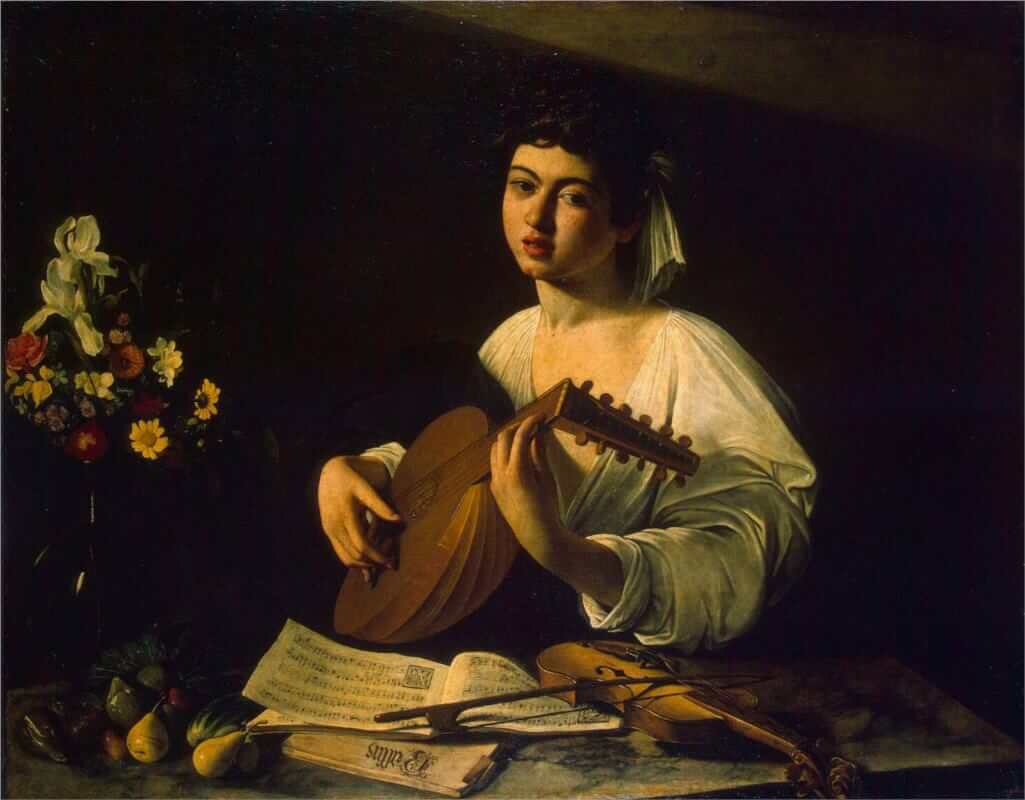
The Lute Player was painted for Cardinal del Monte and probably reflects the patron's homosexual tastes as well as those of the artist. Caravaggio was said by Baglione to have considered it the most beautiful work he ever painted, while Bellori mistook it for a picture of a girl. Whether or not it was originally intended to be hung over a door, its size was such as to be ideally suited for that purpose, and it was listed as 'un quadro sopraporto' in the Giustiniani inventory of 1638. Giustiniani had obviously bought it at the del Monte sale in 1628; it was subsequently purchased by Baron Denon for the Hermitage in 1808. Details worth noticing are the reflections in the vase of flowers, comparable to a similar but more obvious reflection of a window in the slightly later Conversion of the Magdalen, the stronger contrast between light and shadows which signals the beginning of Caravaggio's interest in chiaroscuro and the strategically placed Cremona violin, proffered to the viewer and inviting his participation. The music shows the beginning of a madrigal, 'Voi sapete ch'io v'amo . . .' ('You know that I love you . . .') by the popular Nether¬landish composer Jacob Arcadelt (c. 1514-1568). The closed score underneath has the name 'Gallus' written on it and could refer to any of three sixteenth-century composers known by that name.

